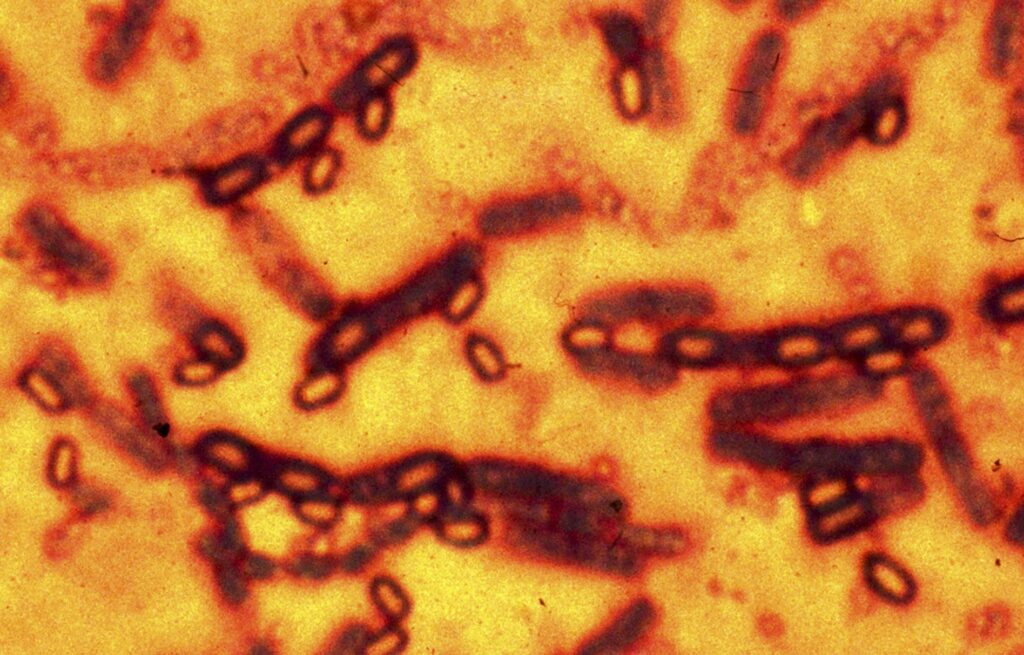The Ghana Health Service has confirmed the outbreak of a zoonotic disease, Anthrax in two communities in the Upper East region.
So for the next month, there will be a ban on the sale, slaughtering and consumption of cattle, sheep, goats and dogs across some 5 districts and a municipality in the Eastern corridor of the region to curb the spread of the disease.
According to the Regional Co-ordinating Council (RCC), there is a further ban on the movement of small ruminants (sheep, goats and pigs), cattle and dogs from the affected areas – Bawku Municipality, Bawku West, Pusiga, Garu, Tampane and Binduri Districts – effective June 5, 2022.
What is Anthrax?
Anthrax is a zoonotic disease in herbivores caused by a bacterium called Bacillus anthracis.
“It is a zoonosis (disease transmissible from animals to humans) that typically affects ruminants (such as cows, sheep, and goats),” World Health Organization (WHO) has stated.
According to the WHO, the bacteria produce potent toxins responsible for the symptoms, causing a high lethality rate.
Humans can catch the disease from infected animals or through contaminated animal products.
Types of Anthrax
According to the US Center for Disease Center, there are four types of Anthrax. They include Cutaneous, Inhalation, Gastrointestinal and Injection anthrax.
Cutaneous Anthrax: is the most common form of anthrax infection, and it is also considered to be the least dangerous. Its Infection usually develops from 1 to 7 days after exposure.
“When anthrax spores get into the skin, usually through a cut or scrape, a person can develop cutaneous anthrax. This can happen when a person handles infected animals or contaminated animal products like wool, hides, or hair.”
Inhalation Anthrax: is considered to be the most deadly form of anthrax. The infection usually develops within a week after exposure, but it can take up to 2 months. It occurs when a person breathes in anthrax spores.
People who work in places such as wool mills, slaughterhouses, and tanneries may breathe in the spores when working with infected animals or contaminated animal products.
However, “inhalation anthrax cannot be transmitted from person to person. It can only be contracted by directly inhaling anthrax spores,” the WHO has said.
Gastrointestinal Anthrax: The infection usually develops from 1 to 7 days after exposure. This happens when a person eats raw or undercooked meat from an animal infected with anthrax.
Injection Anthrax: This is another type of anthrax infection recently identified in heroin-injecting drug users in northern Europe. The symptoms may be similar to those of cutaneous anthrax, but there may be an infection deep under the skin or in the muscle where the drug was injected.
How is Anthrax transmitted?
Anthrax usually does not typically spread from animal to animal or human to human.
When anthrax spores are ingested, inhaled or enter the body through skin abrasions or cuts, they can germinate, multiply and produce toxins.
- Insects can transmit the bacterium between animals. Animal feed can be contaminated by anthrax if it contains the bone meal of infected animals.
- Humans can get infected if they handle or are involved in the slaughter of a sick animal or are in contact with contaminated animal products (such as meat, blood, wool, hides, and bones).
- Anthrax can also be contracted in laboratory accidents.
- Furthermore, anthrax can be contracted by heroin-injecting drug users through injecting contaminated heroin. Moreover, Bacillus anthracis has always been high on the list of potential agents for biological warfare and bioterrorism
How to prevent anthrax
- Correct disposal of the carcass(es)
- Decontamination of the site(s) and of items used to test and dispose of the carcass(es)
- Initiation of treatment and/or vaccination of other animals as appropriate.
The best disposal method is incineration – a waste treatment process that involves burning at temperatures high enough to destroy contaminants.
By: Gifty Tracy Aminu



